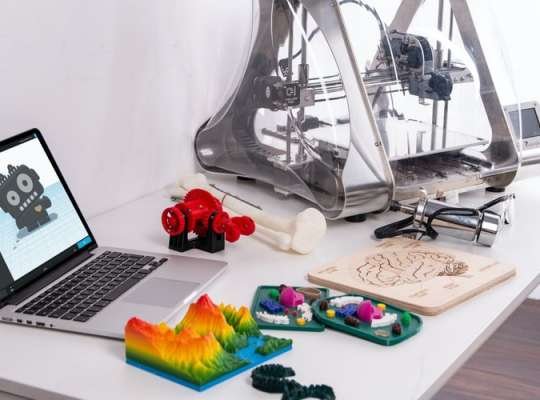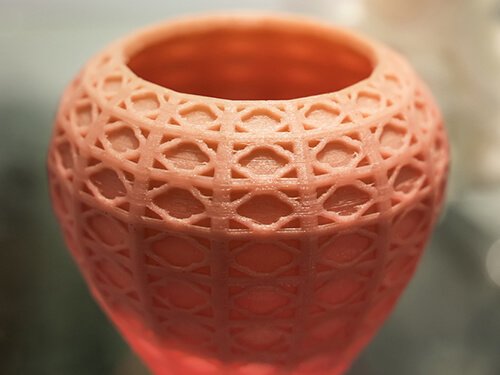Fused Deposition Modeling (FDM) 3D Printing Service
Fused Deposition Modeling (FDM) is a versatile and widely used 3D printing technology suitable for both personal and professional use. It is highly accessible, cost-effective, and offers a wide variety of material options, making it ideal for rapid prototyping, product development, and low-volume manufacturing. While it may have limitations in terms of surface finish and print speed, the advantages of FDM, such as material flexibility and ease of use, make it a go-to choice for many industries.
What is FDM 3D Printing?
Fused Deposition Modeling (FDM), also known as Fused Filament Fabrication (FFF), is one of the most widely used and accessible 3D printing technologies. FDM works by extruding a thermoplastic filament through a heated nozzle, where the filament melts and is deposited layer by layer to build up a three-dimensional object. This technology is especially popular in desktop 3D printing and is commonly used in education, prototyping, product development, and even low-volume manufacturing.
Fused Deposition Modeling 3D Printing Materials
FDM Materials Available at Avinyaworks:
| Material Name | Color(s) | Tensile Strength, Yield (XZ MPa-ZX MPa) | Elongation at Break (XZ%-ZX%) | HDT @ 66 psi (°C) |
|---|---|---|---|---|
|
ABS-M30 |
Black, Blue, Dark Grey, Ivory, Red, White |
32 MPa-28 MPa |
7%-2% |
96 °C |
|
ABS-ESD7 |
Black (electrostatic dissipative properties) |
36 MPa |
3% |
96 °C |
|
ABSi |
Translucent Natural, Translucent Amber, Translucent Red |
37 MPa |
4.4% |
86 °C |
|
ASA |
Black, Dark Blue, Dark Gray, Light Gray, Green, Ivory, Orange, Red, White, Yellow |
27 MPa |
9%-3% |
98 °C |
|
Nylon 12 |
Black |
49.3 MPa-41.8 MPa |
30%-6.5% |
91.9 °C |
|
PC-ABS |
Black |
41 MPa |
6% |
110 °C |
|
PC |
White |
57 MPa-42 MPa |
4.8%-2.5% |
138 °C |
|
PC-ISO |
Translucent Natural, White |
57 MPa |
4% |
133 °C |
|
Prototyping PLA |
Black, Blue, Red, White |
50 MPa-37 MPa |
2.9%-1.9% |
55 °C |
|
ULTEM 9085 |
Black, Tan |
47 MPa-33 MPa |
5.8%-2.2% |
153 °C |
|
ULTEM 1010 |
Amber (Natural) |
64 MPa-41 MPa |
3.3%-2.0% |
216 °C |
Prototyping PLA
PLA (Polylactic Acid) is one of the most popular and widely used materials for 3D printing, particularly in prototyping. As a biodegradable thermoplastic made from renewable resources like cornstarch or sugarcane, PLA is favored for its ease of use, environmental friendliness, and good surface finish. These characteristics make it an ideal choice for rapid prototyping across various industries and applications.

FDM Applications
Benefits of Fused Deposition Modeling (FDM)
Precision
We use the most advanced industrial FDM printers designed to meet tolerances of +/- a single build layer thickness (e.g. 0.010″) for the first inch and +/- .002” for every inch thereafter.
Strength
FDM printed parts are available in a variety of high-performance plastics for applications that require resistance to the elements.
Large Build
We can produce FDM parts with large build volumes up to 24″ x 36″ x 36″
Rapid Turnaround
FDM parts do not require tooling which reduces the manufacturing lead time from weeks to days.
Real Thermoplastics
FDM has the highest variety of real engineered thermoplastics.
Part Production
An FDM printer is capable of producing end-use parts on-demand, increasing throughput and helping you get to market faster.
FDM General Tolerances
General Tolerances for FDM 3D Printing
| Tolerance Note | Description |
|---|---|
|
General Tolerance |
+/- a single build layer thickness for the first inch and +/- .002” for every inch thereafter. |
|
Build Size |
Up to 24″ x 36″ x 36″ |
|
Layer Height, less than 16″ |
0.010″ Layers (0.008″ for PLA) |
|
Layer Height, greater than 16″ (up to 36″) |
0.013″ Layers |
|
Minimum Wall Thickness |
0.047″(less than 16″), 0.060″ (greater than 16″) |
An Overview of the FDM Process
Fused Deposition Modeling (FDM) is one of the most widely used 3D printing technologies, especially for prototyping and manufacturing of functional parts. It involves the layer-by-layer deposition of a thermoplastic material to build a three-dimensional object. Fused Deposition Modeling (FDM) is a versatile and accessible 3D printing technology that is ideal for rapid prototyping and low-volume production. By depositing melted thermoplastic layer by layer, FDM printers can create functional parts, prototypes, and models with a wide range of materials. While there are some limitations in surface quality and printing speed, the technology remains a popular choice due to its cost-effectiveness, ease of use, and material flexibility.
Why Use FDM For Your Parts?
Fused Deposition Modeling (FDM) is one of the most widely accessible and recognized additive manufacturing technologies globally, catering to both 3D printing enthusiasts and high-volume manufacturers. Known for its speed, precision, and versatility, FDM creates three-dimensional polymeric structures using a variety of feedstock materials. The range of filaments available for FDM printing includes:
- Acrylonitrile Butadiene Styrene (ABS-M30, ABS-M30i, ABSi): A tough, impact-resistant material, widely used for functional prototypes and end-use parts.
- Acrylonitrile Styrene Acrylate (ASA): Known for its weather resistance, ASA is ideal for outdoor applications and parts exposed to UV light.
- Polycarbonates (PC, PC-ABS, PC-ISO): These materials offer high strength, heat resistance, and excellent impact resistance, making them suitable for engineering applications.
- High-Performance Plastics (PPSF, Ultem 1010, Ultem 9085, Nylon-12): These specialized materials provide superior mechanical properties, including high chemical resistance, flame resistance, and thermal stability, making them ideal for demanding industrial applications.

Why Choose Avinyaworks for FDM 3D Printing?
Endless Options
Choose from millions of possible combinations of materials, finishes, tolerances, markings, and certifications for your order.
Easy to Use
Get your parts delivered right to your door without the hassle of sourcing, project management, logistics, or shipping.
Quality Assurance
Our quality check includes visual inspection, dimensional verification, functionality testing (if applicable), and a review of surface finish.

